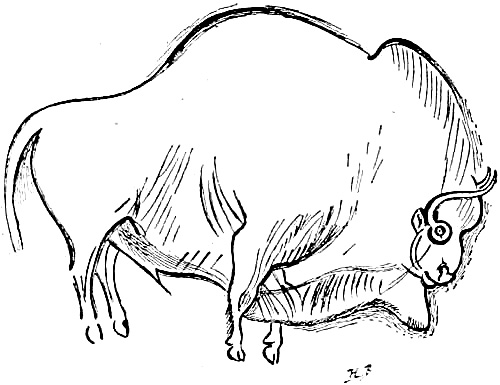The Dordogne region of southern France is home to some of the oldest known artworks in the world. Across the walls and ceilings of over 200 caves in the region are an array of colourful paintings created by our ancient ancestors. But despite their significant age, it is not completely clear just how old they are. Now researchers have a way to date these spectacular Paleolithic creations with greater precision.
The reason why these cave specimens have defied attempts to determine their exact age is related to the materials used to create them. In most instances, the cave paintings have been colored with iron- or manganese-oxide-based materials, which means it is not possible to conduct radiocarbon dating analysis.
As such, archaeologists and anthropologists have previously estimated that the cave art was created during the Magdalenian Period, around 12,000 to 17,000 years ago.
However, new research conducted by scientists with the Centre de Recherche et de Restauration des Musées de France has reported the first discovery of black carbon-based art in the Font-de-Gaume (pronounced “Goorm”) cave. This material offers opportunities to conduct radiocarbon dating and to reevaluate the existing art in this region.
The charcoal-based drawings were first discovered in February 2020 in what is referred to as the cave’s main galleries. This cave site is informally known as “Bison Cave” as it is home to 80 depictions of bison, as well as other animals such as deer, horses, and mammoths. Pretty much two-thirds of the art located in Font-de-Gaume relates to animals, while the remaining third is represented by tectiforms – a design found in Paleolithic art that is thought to depict a form of dwelling.

Outline of one of the bison cave paintings from the Galerie des Fresques at Font-de-Gaume.
The bison depicted in this cave sometimes consist of two or more shades that range from black to brown to red to yellow. Others were created with more defined black and red materials, or only black.
Back in 1902, samples of colored matter were taken from some of these ancient images by Henri Moissan, who won the Nobel Prize in Chemistry in 1906. Moissan determined that components of the material included iron and manganese oxide. However, the Font-De-Gaume cave is now a UNESCO World Heritage site, so subsequent samples are only rarely permitted.
How to test without touching
In order to get a more accurate picture of… the pictures’ dates, researchers have used non-invasive analytical techniques. In particular, they have used both visible-light and infrared photography, superimposition of the visible-light and infrared images, portable X-ray fluorescence (pXRF), and portable micro-Raman spectroscopy to generate information.
These techniques showed that there are carbon-based drawings under others that were made from iron and manganese oxide.
The team superimposed visible-light and infrared images taken from the same vantage point to create false color infrared photographs (FCIR), which allowed them to differentiate between the materials used to make the art. They then used micro-Raman spectroscopy to detect the carbon compounds within the images, and to detect specific mineralogical phases of the iron and manganese oxide-based pigments.
This method allowed the team to identify images specifically created with charcoal-black-based compounds, while pXRF let the researchers differentiate among the manganese oxide compounds used in the black figures.
A step in an exciting direction
Although the researchers have not yet subjected the art to radiocarbon dating analysis, their work suggests the different color materials may represent different phases of creation, especially when compared to other examples in the Dordogne. In particular, the black pigments used at the Font-de-Gaume cave are similar to those used at the nearby Rouffignac cave site.
The next steps will be to assess these pigments for their exact date of creation, which will open new avenues for comparative research within the Dordogne and elsewhere.
The study is published in Scientific Reports.
Source Link: First Prehistoric Charcoal Cave Art Discovery In France’s Dordogne Could Be Revelatory In Dating Other Finds